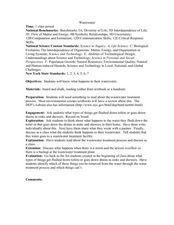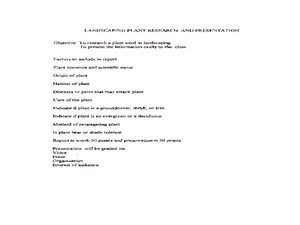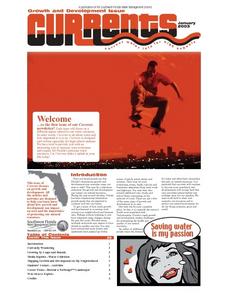Curated OER
Survival: The Human Body in Extreme Environments
Students name and describe the major systems that work together as a unity to monitor and regulate the human body as it goes about its business of securing the essential requirements for life. They identify specific human features and/or...
National Energy Education Development Project
Great Energy Debate
If someone yelled for eight years and eight months, they could produce enough energy to heat one cup of coffee. A lesson on energy encourages scholars to research 10 different energy sources in groups before playing a game. Twenty...
Curated OER
From Ground to Water
Students explore groundwater and issues relating to groundwater. They discus the problems involving groundwater. Students write a newspaper story addressing groundwater problems. They create a comic strip addressing groundwater...
Curated OER
Blood Business
Students identify the different kinds of blood. In this biology instructional activity, students investigate the antigens, agglutinins and Rh factor using their own blood. They use Punnett squares to predict blood type of offspring.
Curated OER
"A Typical Day at Seaworld" one day visit
Explore the business side of careers in zoological or marine parks. Learners use the internet, field trips, and their research skills to develop an understanding of what skills are needed to work in an animal park environment.
Curated OER
Runoff: Intro to Watersheds
Young scholars are taught that a watershed is, what types of basic land cover are impermeable and permeable to water. They trace the flow of water around their school and around their home. Students determine what watershed their school...
Curated OER
Wastewater
Students discuss what happens to their wastewater. They read about the wastewater treatment process. Students are asked what types of things get flushed down toilets or goes down drains in sinks and showers. They are taught what happens...
Curated OER
Power House
Students reflect, speculate, identify, research, and create a blueprint for renewable energy sources.
Curated OER
Walk Like Animals
There's nothing like a good movement activity for young learners. For this one, everyone pretends to be a certain kind of animal and moves in a way that the animal really does. First, a brainstorm session is held where the kids name the...
Curated OER
Oyster Culture Cycle Worksheet
In this oyster culture cycle worksheet, students answer 31 questions about the six stages of the oyster culture cycle. They also answer questions about the oyster business.
Curated OER
Fossils Footprints Across Time
Students examine fossils to understand how they are formed and how they give information about geological history. In this fossil lesson, students research and write about fossils and make models of different fossil types.The PDF...
Curated OER
A Day Without Agriculture
Second graders define and create a list of agricultural products. In this producers and consumers lesson, 2nd graders participate in a contest to find as many types of agriculture as they can. The student who comes up with...
Curated OER
The Recycling Factory
In this density of materials activity, students examine ways to sort a dump truck of recycled materials using the density of the material types. Students write a letter to the city council to describe their method of sorting.
Curated OER
The Magic of Solar Thermal: How the Sun Can Be Used to Heat Water
Students are introduced to how the sun is used to heat water. In this solar lesson students identify the different types of solar water heating and demonstrate how it works.
Curated OER
Monitoring an Epidemic: Analyzing Through Graphical Displays Factors Relating to the Spread of HIV/AIDS
Tenth graders differentiate pandemic and epidemic. In this health science lesson, 10th graders analyze how HIV and AIDS affect different countries. They construct and interpret different types of graphs.
Curated OER
Getting our Paws into the Cause
Twelfth graders examine local, state, and/or national animal welfare organization. In this Social Studies lesson, 12th graders research their identified organization. Students develop a planned intervention...
Virginia Department of Education
Soap, Slime, and Creative Chromatography
Do you think chromatography paper suffers from separation anxiety? Young chemists make soap, slime, silly putty, and experiment with chromatography in this lesson. The material includes clear instructions for each experiment along with...
NOAA
Make an Edible Coral Reef
Coral reefs are full of an abundance of life and color. Why not celebrate it with an edible coral reef? Learners and teachers alike use cake, icing, and candies to create a tasty version of a coral reef that's complete with colors,...
K12 Reader
Chaparral Ecosystems
Explore the impact of wildfires with a reading passage about ecosystems. Pupils read the passage and respond to five questions related to the content of the text.
Curated OER
Plants, Plants, and More Plants
Students examine several types of plants. In this plant instructional activity, students complete activities that require them to identify types of plants, chart plant anatomy, and explain plant propagation.
Curated OER
Fish Activities
In this fish activity worksheet, learners learn a counting rhyme about fish. They then discuss the best way to care for fish and they learn 4 different types of fish. On the second page, students count lines of fish and color them a...
Curated OER
Seed to Market
Middle schoolers research using a variety of materials and technology. They explain the specifics of growing crops. They use mathematics in common business calculations.
Curated OER
Currents 2003
For this environment worksheet, learners read an article about growth and development of population and the environment. They respond to various types of questions throughout the article packet pertaining to what they read and why.
Curated OER
Leap Year
In this Leap Year reading comprehension worksheet, can learn about the various types of calendars (lunar, solar, etc.) and answer 7 multiple choice questions. Also included is a word search of key terms.























